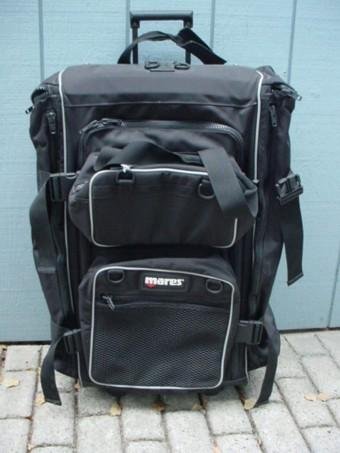Dive Accessories
There are many accessories available for diving. Some are luxuries you'll discover while browsing your local dive shop. Others are important for safety, enjoyment, or convenience. These include dive knives, dive lights, logbooks, gear bags, dive flags, spare parts, and signaling devices.

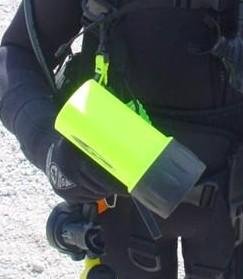
Dive Knives
A dive knife is an important tool for cutting entanglements you may encounter underwater. These include fishing line, nets, rope, and kelp. Contrary to what you may have seen in movies, they are not used for self-defense against marine life.
A variety of blade styles are available for different purposes. Knives with pointed tips are popular for spearfishing, while a blunt tip is popular for prying objects loose. Your dive shop will be able to help you select the best knife for your needs.
Your knife should be carried in a quick-release sheath mounted in an accessible location. This can be the inside of your lower leg, outside of your BC, or for some models, your BC's low-pressure inflator hose.
Some knives have a metal end or tank banger on the handle. This is tapped against your tank to gain your buddy's attention.
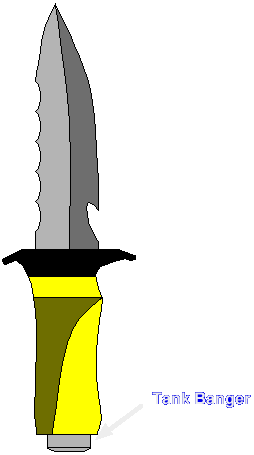
Dive Lights
Dive lights serve several purposes. The obvious uses are illuminating dark crevices between rocks and night diving. But another use is to bring out the natural colors of objects underwater.
As you'll learn during the "Physics" chapter, water absorbs colors of the light spectrum as you descend, so the deeper you dive, the fewer colors you'll see. Carrying a light allows you to see colors you'd ordinarily never know existed underwater.
Dive lights use lubricated o-rings to maintain a watertight seal. Handle these o-rings with care when replacing batteries. Sand, salt crystals, and even strands of hair can create a leak that will result in a flooded light.
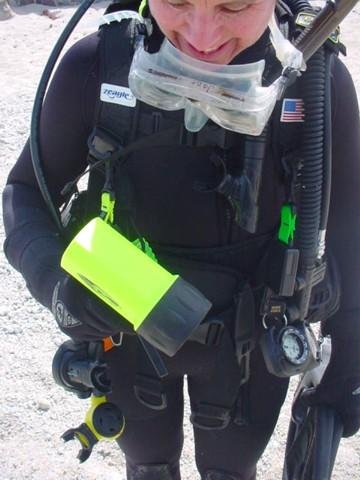
Logbooks
You should document your dives and training in a logbook. This serves as a record of your diving experience which you can reference in the future when you need to recall information about a specific dive or your total experience.
Typical information documented in a logbook includes the dive's location, depth, duration, date, time, water conditions, and notes about the general experience or what was seen during the dive. Information about your total dive history including number of dives and total time in the water is also included in the logbook.
Dive operators and instructors may require that you provide a logbook as verification of your experience before accepting you for dive activities or training.

Signaling Devices
There are several accessories available for getting others' attention underwater and on the surface.
Surface signals include whistles, noisemakers, inflatable signaling tubes, and when necessary, splashing. While underwater you can use a light, tap the butt of your knife against your tank, or use an elastic tank banger.
Signaling devices can be either visual or auditory. Visual signals are important on the surface where rescuers may have difficulty locating you. Underwater, auditory signals are usually the most reliable.

Dive Flags
Dive flags should be displayed on a boat or surface support station whenever divers are in the water. This alerts boats that divers are in the area. The two flags used by divers are the United States dive flag and international diver code "Alpha" flag.
The United States dive flag is used by most recreational divers in the United States. Displaying this flag tells boats to stay clear of the area because divers are in the water. Local laws determine the exact distance boats must keep from the flag, but this is usually 100 feet.
The international diver code "Alpha" flag is displayed by most dive boats. This flag states that the boat's movement is restricted because divers are in the water.
No matter which flag is displayed, it should be removed as soon as divers exit the water.


Spare Parts Kits
Not all equipment failures require professional repair. Fin and mask straps, cylinder o-rings, regulator mouthpieces, and snorkel keepers can be replaced in any environment. But these failures can ruin a dive trip if you don't have replacement parts available.
Several companies sell spare parts kits in convenient packages for field repair, and investing in one of these kits can save an otherwise wasted dive trip.
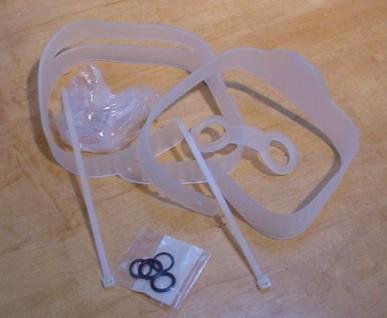
Gear Bags
A gear bag is necessary for transporting your gear to and from a dive boat or site. Bags are available in both hard and soft styles, and each has its own benefits.
A hard bag is best to use when checking your gear in an airport because the rigid design protects your gear from rough handling. But if you plan on doing a lot of boat diving, a soft bag is preferred because it can be folded and stored out of the way of other divers.
Gear bags sold for diving equipment are manufactured to transport wet equipment. They are made of nylon or other water safe materials, and most have riveted holes to allow drainage. A desirable feature is a separate dry compartment for protecting personal items such as your towel, dry clothes, camera, and wallet.
